INDIE GAME CASE STUDY: Tech & Audience
 Thursday, November 1, 2012 at 10:06AM
Thursday, November 1, 2012 at 10:06AM  Hi there, Lisanne and James here, continuing on our blog series on the making/releasing of Indie Game: The Movie. Covering...
Hi there, Lisanne and James here, continuing on our blog series on the making/releasing of Indie Game: The Movie. Covering...
PART 1: Overview
PART 2: Technology & Building Audience (today!)
PART 3: Distribution - Theatrical & Tour
PART 4: Distribution - Digital
PART 5: We're not Louis C.K. ... and you can be too!
Making The Movie

Indie Game: The Movie (IGTM) is very much a product of our times. This film could not have been made & released the way it was five years ago, heck, not even 2-3 years ago. The film, and us, are hugely indebted to the technology, tools and evolving audience attitudes that made all this possible.
How we made the movie very much affected (and enabled) how we eventually released the movie. Obviously a lot went into making IGTM, we could do an entire blog series on its production, but we're going to give you the overview and concentrate on how it relates to the film's distribution (though feel free to check out some of our previous posts here, here & here. And, a project timeline here).
But, in terms of distribution, there are two core ideas that enabled IGTM reach so many people, despite its small budget/team size,
- leveraging accessible technology/tools
- early, active audience engagement
In this post, we’ll talk about at how these ideas helped us make the film, build the audience prior to release, and then, informed our choices regarding the film’s distribution.
Two People & Technology

Here are some of the key tools that really helped & empowered us (the directors/producers/cinematographers/editors/distributors) make & release Indie Game: The Movie:

1. Shooting: Canon HD DSLR Technology & Other Accessible Filmmaking technology
(A detailed list of the film production gear - see this post.)
2. Editing: Apple Final Cut Pro, Motion & Colour, Adobeʼs Photoshop & Plural Eyes (More here.)
3. Online Video: Vimeo & Youtube
4. Outreach: Twitter & Facebook
5. Funding: Kickstarter
6. Website/Blog: Squarespace
7. Mailing List: Mailchimp
8. Online Sales: Paypal / Amazon
9. Tour Tickets: Eventbrite
10. Worldwide Online Release: VHX, iTunes & Steam
11. Other Online Releases: Amazon, Vudu, Zune, YouTube, Playstation
(through Sundance Artist Services)
12. Broadcast Release: Netflix
13. Community screenings: Squarespace Form & Tugg
14. Online Shop: Shopify
15. Fulfillment: Whiplash
16. BluRay Mastering: Encore + BluStreak
17. DVD/Blu-ray Printing: Disc Makers
Audience Engagement

Most films begin finding their audience after production is complete. Once a release date is in sight, a trailer is created and a marketing budget & push is applied.
From the very beginning, we knew that we wanted to do things a little different with IGTM. In researching the film, we kept on seeing fantastic examples, within independent gaming, of an intriguing kind of creative entrepreneurialism taking place.
Basically, developers were making cool things and being very open throughout the entire process. They would keep detailed development blogs, publish open Betas and fund themselves through pre-orders. Over time, these creators would build themselves a dedicated audience that was deeply invested in the project in more ways then just financial. (Some great examples, at that time Overgrowth, World of Goo & now of course, Minecraft.)
It was a development process that to us meant, ‘Thinking Like A Fan’. Giving your audience the type of content & engagement that you’d like to see from the games/film/music/stuff you’re into. It’s a simple and effective way of building an audience for your work.
Building Audience, While Making a Film

We used this ‘Think Like A Fan’ mantra, over the course of making the film, and we did the following...
Audience Responding: We tried to respond to nearly every email, Facebook post or tweet the film received.
Frequent Blogging: Maintained an active production blog. Posting over 150 entries in 70 weeks of production.
Video Extras: Over the course of production we produced and published, usually from hotel rooms on the road, 88 minutes of video extra content. This was usually content that we knew wasn’t going into the film, but would be of interest to our core audience nonetheless.
Pre-Order Opportunity: IGTM had two Kickstarter successful campaigns that offered pre-orders (May 2010 & May 2011). But, we also offered preorders from our website between those campaigns.
Pre-orders were a big part of the film’s total funding, and they were very much needed. But, also, offering preorders worked into the ‘Think Like a Fan’ philosophy - giving a potential audience member a way to invest, whenever they discovered the film online, and be part of the journey.
It feels like we literally built the audience for IGTM one email, one tweet at a time. Looking back at it, it was probably an insane amount of work for two people. Here's how we spent our time...
(Interesting note: Only 42% of our time was directly spent creating the actual film.)
In terms of numbers, here’s what that audience engagement actually meant. Between the 2 filmmakers, over the course of the 33 months of production (and distribution):
• 10,286 IGTM-related emails were written or replied to
• 13,783 Tweets were sent off from @indiegamemovie
• 182 blog posts were made on IndieGameTheMovie.com
• 88 minutes of extra video web content was published prior to release, resulting in over 1.3 million views.
• 51 Updates were given to Kickstarter Backers
• 2,784 emails were support/fan emails personally responded to after the June 12th release.
The Results

By the time, Indie Game: The Movie premiered at the Sundance Film Festival...
- The film had raised over $ 150,000 in pre-orders.
- Received over 3,000+ detailed screening requests
- Accumulated a fanbase/mailing list of 30,000 people.
From a film industry perspective, these are not huge audience numbers by any means. But when looked at as an indicator and keeping in mind they were based on a film that didn’t yet exist, these numbers become powerful.
Distribution Conditions

Often, when a film goes to a festival, especially one such as Sundance, the producers are looking to get a distribution deal. Heading into our first film festival experience there, producing the film the way we did, we went into distribution talks, with the following in our favour...
Proof of Audience: With 3,000+ screening requests and over $150K in preorders, two important questions were answered even before the film was ever screened: ‘Will anyone want to see this thing?’ and ‘If so, can we reach them?’. The answer was yes in both cases. The unknown was - how many people beyond those preorders would be interested? Did $150K represent 50% of ultimate audience? 20%? less than that?
Lack of Debt: By accepting pre-orders we were able to produce the film without debt or equity partners. Without this, there was less pressure to make a deal in order to pay back debt. (We should mention that the cost of the film was more pre-order totals. We personally financing approx. 60% of the film by not paying ourselves.)
A Back Up Plan: Being pragmatic, before Sundance was a reality, we had a self-distribution strategy that we believed could work and be successful for this film.
Our distribution path was also affected by...
Audience Responsibility: Having people put down actual money for a film (that didn’t yet exist) is a special and rather sacred thing. We spent 1.5 years building a relationship with a growing audience. And though, we had ambitions to grow the audience much further, we did feel a strong responsibility release the film in a timeframe and manner preferred by our supporters. We had a worldwide fan base that desired a same day online release with DRM-free options. These elements could complicate traditional approaches to documentary distribution (staggered releases, territory windowing, and DRM-only release).
Emerging Sea Change: While making the film, we were seeing really exciting things happening in film. We were very inspired by the releases by Gary Hustwit (Helvetica, Objectified and Urbanized), Louis CK and Kevin Smith. Even though we didn’t quite have the fanbase of these great names, we thought a direct-to-audience release potentially work for IGTM.
Note: At Sundance, we brought on some help to navigate the distribution and press world. We worked with sales agent Andrew Herwitz of Film Sales Company. Andrew has been a great resource to us and very respectful of our unique vision for the film's release. We also worked with the two PR companies, the very professional and connected Strategy PR/Consulting & the savvy, enthusiastic Bond Strategy and Influence. Perhaps, we'll do another post about all that & the festival premiere experience at a later date.
"The Decision"

We talked about this tough decision in an earlier post here. But, in short; At Sundance, the film received some distribution offers. Many of which would have made our lives much much easier. However, none of them felt quite right. We were concerned about release timing, regional/windowed rollout, and digital control.
So, we turned them down.
We can write that with a certain degree of confidence now. But, at the time, we were freaking out inside. Sure, we made an educated decision that we felt confident in. We had just turned down actual deals from actual distribution people!
It felt like the right decision but it was not one we took lightly and led to many sleepless nights as we committed to the idea of leading the release of Indie Game: The Movie ourselves.
So, what happened next? Well, we will delve into that in the next post.
Thanks for reading,
-James & Lisanne
-A huge Thank You to Chad Pugh for the great inforgraphic/design work. Feel free to check out his beautiful work here -
OTHER CASE STUDY POSTS
PART 1: Overview
PART 2: Technology & Building Audience
PART 3: Distribution - Theatrical & Tour
PART 4: Distribution - Digital
PART 5: We're not Louis C.K. ... and you can be too!
NOTE: If you'd like to be included on future updates and a potential and expanded eBook version of the IGTM case study, please sign up for the mailing list in the top left column.

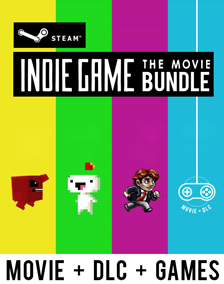
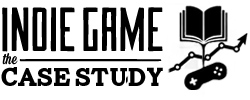


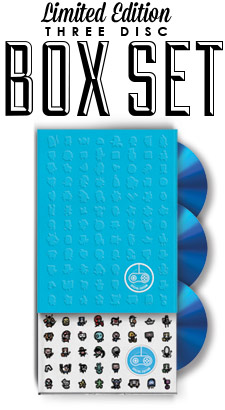
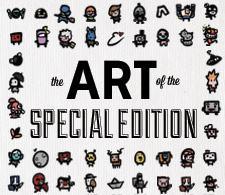

Reader Comments (5)
Such great detailed statistics on all the time and energy you put into the film. Thanks for sharing!
Thank you so much for sharing this interesting information!
Greetings Jesse
This is a great post (in a series of great posts). I love how you've maintained an openness about the whole process; it's been educational and inspiring to indie creators in every medium.
Thanks!
HELL YES! KEEP POSTING AND THANK YOU!
Hey,
This is great, useful stuff, but who did the website design overhaul? Was it you? Was it VHX? How does squarespace fit into all of this?
Thanks,
John